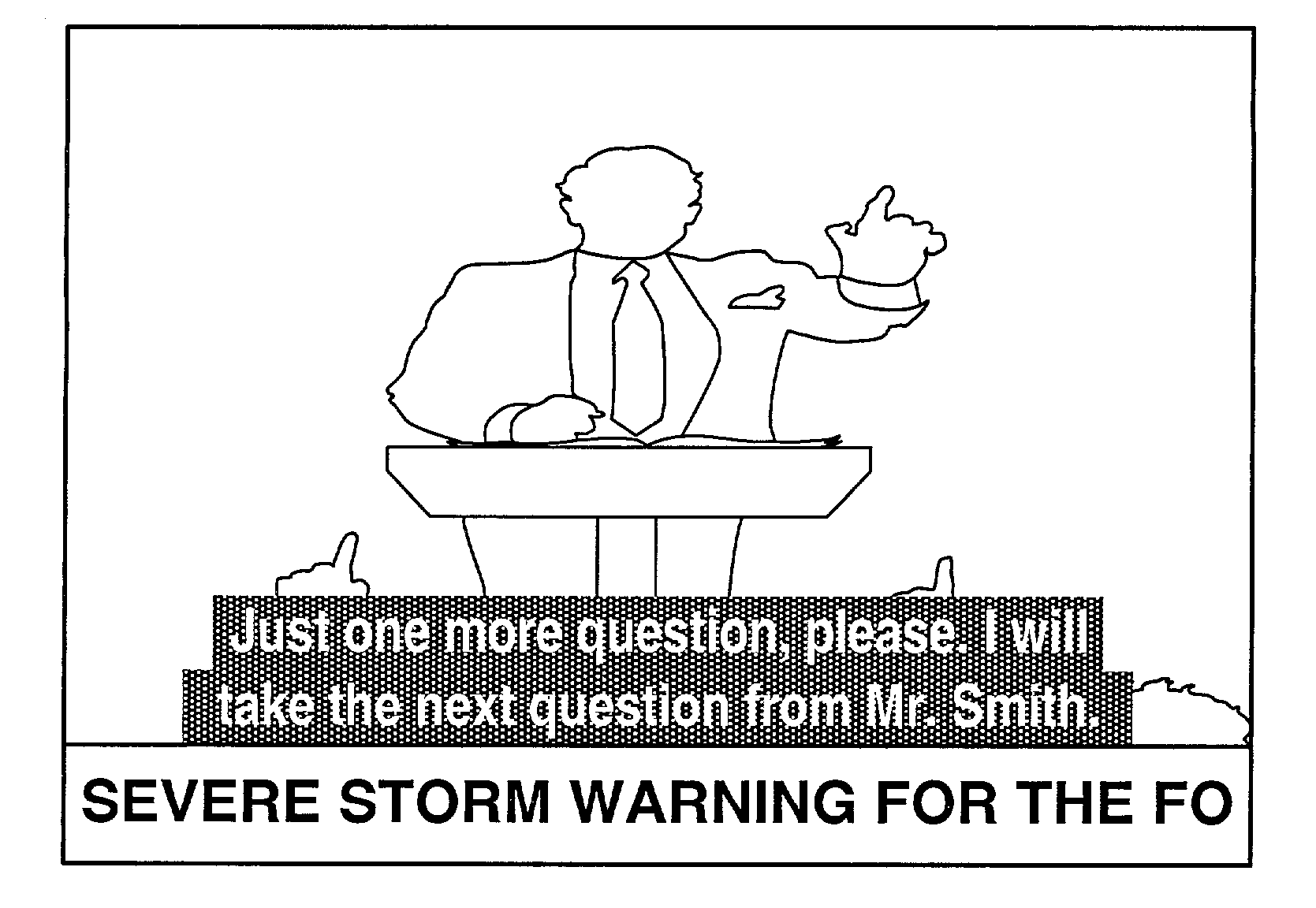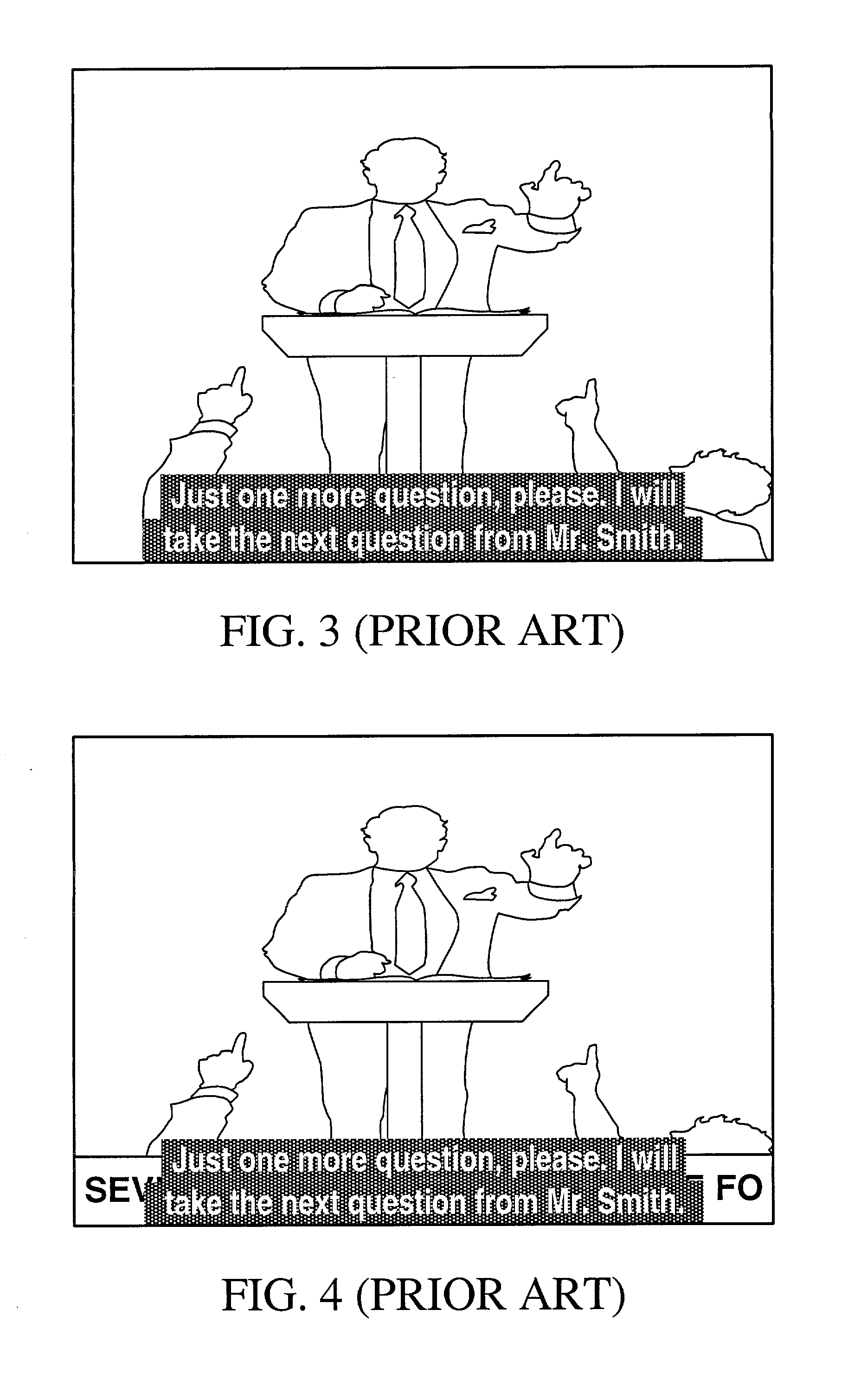Method and apparatus for control of closed captioning
a closed captioning and control method technology, applied in the field of closed captioning, can solve the problems of blocking the portion of the picture, denying the viewer notification of critical information, and ineffective repositioning function on other types of open graphics
- Summary
- Abstract
- Description
- Claims
- Application Information
AI Technical Summary
Problems solved by technology
Method used
Image
Examples
Embodiment Construction
[0038] By enabling a person other than a captioner to control various aspects of a closed caption such as the number of caption lines and the placement of the caption window, interference between the closed caption and an open graphic or, more generally, any section of a displayed video image may be avoided. FIG. 5 shows that the closed caption "Just one more question, please. I will take the next question from Mr. Smith" is positioned a sufficient distance from the bottom of the screen to permit a severe storm warning banner to be displayed without any interference from the closed caption. The closed caption is repositioned without the captioner's involvement, and particularly without any need to disrupt the captioner's transcription of the oral content of the audio or audio-video work.
[0039] A illustrative system 600 for performing real time closed captioning using a conventional closed captioning encoder is shown in FIG. 6. The system 600 enables various aspects of a closed capti...
PUM
 Login to View More
Login to View More Abstract
Description
Claims
Application Information
 Login to View More
Login to View More - R&D
- Intellectual Property
- Life Sciences
- Materials
- Tech Scout
- Unparalleled Data Quality
- Higher Quality Content
- 60% Fewer Hallucinations
Browse by: Latest US Patents, China's latest patents, Technical Efficacy Thesaurus, Application Domain, Technology Topic, Popular Technical Reports.
© 2025 PatSnap. All rights reserved.Legal|Privacy policy|Modern Slavery Act Transparency Statement|Sitemap|About US| Contact US: help@patsnap.com



